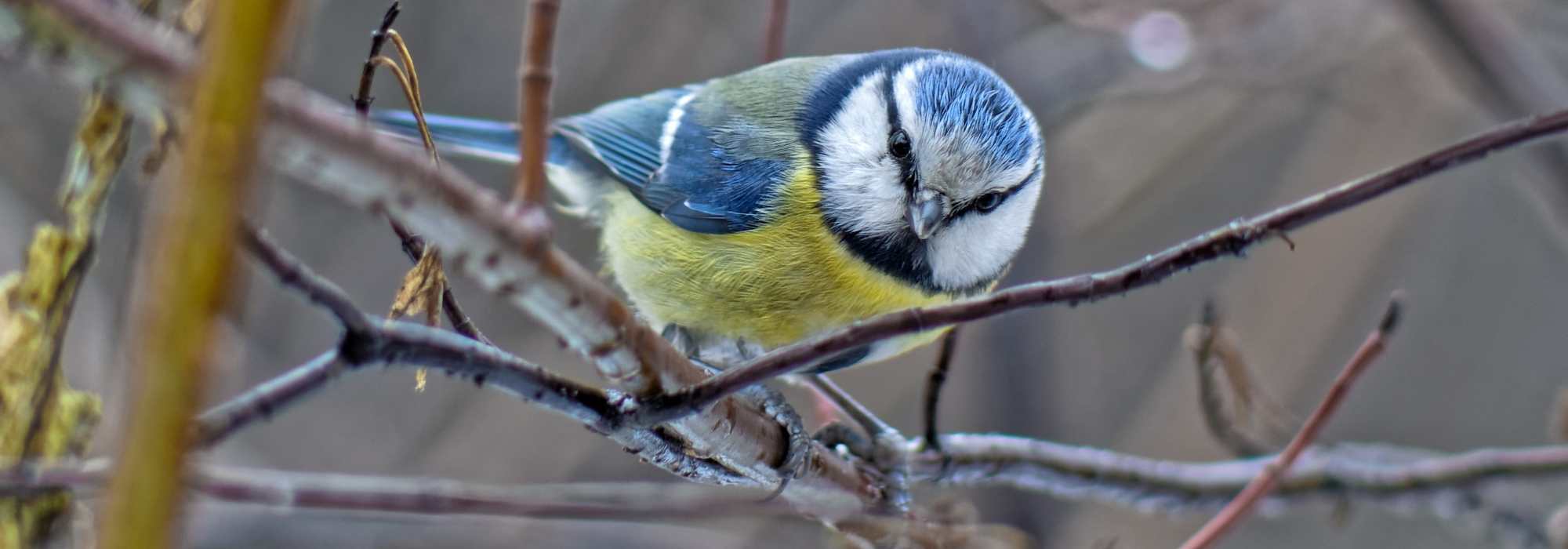
Welcoming Blue Tits to the Garden
Do everything to attract these charming balls of feathers.
Contents
Tits are birds from the family Paridae. In Western Europe and in our gardens, we may be lucky enough to encounter 6 species of tits: Great Tit, Coal Tit, Blue Tit, Marsh Tit, Boreal Tit (which is rarer, however!) and Crested Tit. Additionally, there is a “false tit” that was long called Long-tailed Tit, which is now known as Long-tailed Orite. These friendly birds are insectivorous during the beautiful season and become more or less granivorous in winter. Therefore, we can spot them all year round, even in winter at the feeder. Let’s quickly discover the differences between the species!
Great Tit
The Great Tit (Parus major) is a bird the size of a sparrow and very little shy. It has a black and white head, a yellow belly, and an olive green back. The male is distinguished from the female by a wider black “tie” on its belly. Its repertoire of songs and calls is quite extensive, making it sometimes difficult to recognise by its voice. It is the most commonly encountered tit in the garden.
It can be found in gardens all year round, even in winter, throughout France, including Corsica, and in Belgium. In winter, some Great Tits will stay, soon joined by winter visitors from the North. The populations in gardens are therefore somewhat fluctuating.
Primarily insectivorous with omnivorous tendencies (which allows it to find food even in winter), the Great Tit gorges on spiders, insects, larvae, as well as sunflower seeds in winter at feeders. The Great Tit nests in cavities (tree holes or in walls) and in nest boxes.
To attract it to your garden: it favours gardens with deciduous bush hedges, a wide variety of trees and bushes, and some fruit trees. It needs vegetation that attracts insects in season and a few berry bushes (in case of scarcity!). Feeding in winter with sunflower seeds allows it to get through the harsh season without trouble. Installing specific nest boxes is a bonus, as pairs of Great Tits tend to return to the same nest box year after year.
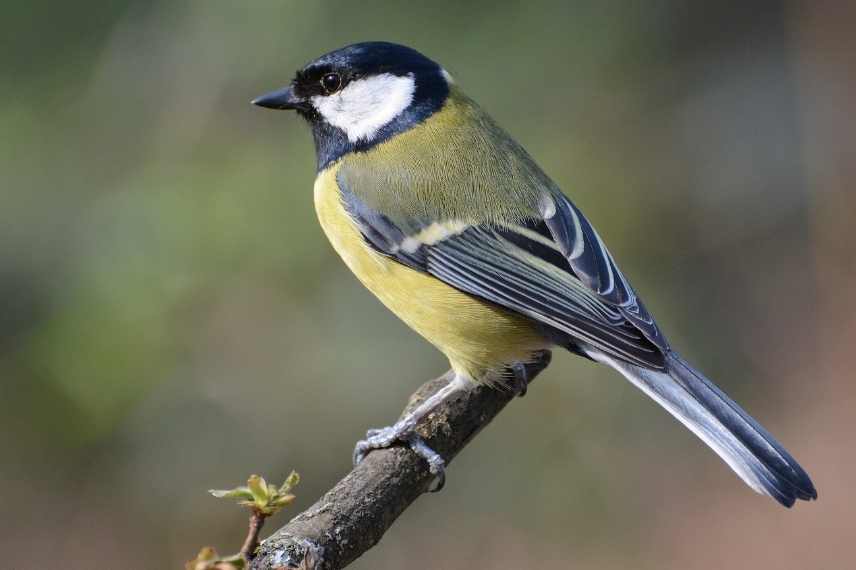 Great Tit
Great Tit
Read also
Hedge for birds: which shrubs to choose?The Blue Tit
The Blue Tit (Cyanistes caeruleus) is slightly smaller than the Great Tit. It is also more colourful (and more cheeky!): its belly is bright yellow, the back is rather olive, but the rest, the tail, wings, and top of the head are a stunning cobalt blue. The rest of the head is white with black outlines and a Zorro-like mask around the eye. It constantly emits little cries, giving the impression that it is a bit annoyed (not at all, that’s just its call!).
It is the second most commonly seen tit in the garden. In fact, in some cases, it is possible to observe more Blue Tits than Great Tits.
The Blue Tit is also present all year round in gardens throughout France and Belgium. Its diet and nesting habits are very similar to those of its cousin, the Great Tit. The two species actually live in groups without any issues.
To attract it to your garden: just like for the Great Tit, a variety of vegetation in the garden and winter feeding will be perfect. Installing a specific nesting box is also a good idea; it will differ from that of the Great Tit by having a hole with a slightly smaller diameter.
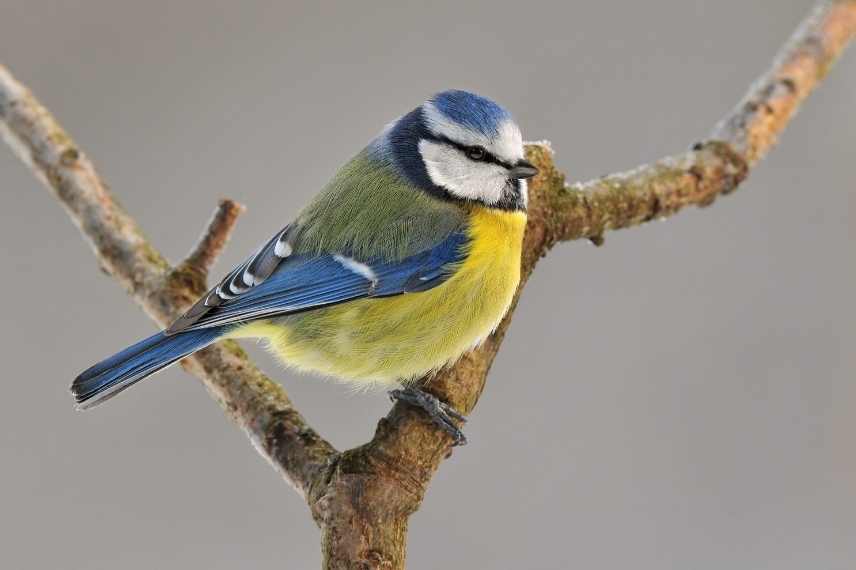 Blue Tit
Blue Tit
Great Tit
Similar in size to the Blue Tit, the Coal Tit (Periparus ater) resembles a very pale Great Tit or one photographed in black and white. More seriously, it can be distinguished from its cousin by its black head with a nape patch and grey-white cheeks. The belly is light grey, while the back and wings are rather bluish-grey. The wings feature two prominent white bands, allowing for quick identification in flight. In females, the “bib” (the patch under the beak) is darker brown rather than black. Otherwise, both sexes are similar. Its song consists of a sort of “pitchou-pitchou-pitchou” and its call is a fluted “tsi”.
The Coal Tit lives in coniferous forests. It feeds on insects during the season thanks to its beak, which can open cones or pick between the needles. At the end of summer and in autumn, this tit prepares seed stocks high in the trees to help it survive the winter. It nests in tree stump holes or rock crevices.
The Coal Tit is present throughout the year in France and Belgium in areas with a high density of conifers. In some years, northern populations migrate in large numbers to the Mediterranean. In the garden, it is more likely to be seen in winter.
To attract it to your garden: the Coal Tit’s preference is for conifers. Pine forests, spruce forests, monocultures of Norway spruce… Therefore, do not expect to see it in the garden if it does not contain large conifers. If it does, a winter feeder with sunflower seeds and a nest box with an entrance the same size as that for the Blue Tit can be beneficial.
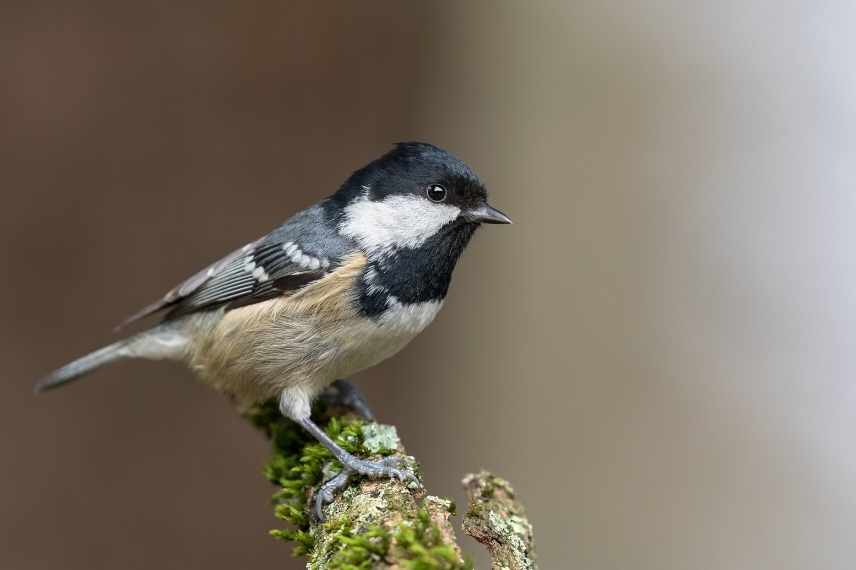 Coal Tit
Coal Tit
Read also
What do the birds in our gardens eat?The Marsh Tit and the Willow Tit
The Marsh Tit (Poecile palustris) and the Willow Tit (Poecile montanus) are two species similar in size to the Blue Tit and look remarkably alike. However, upon closer inspection, their songs and some details differ. When it comes to their songs, it’s difficult to put into words (note: it’s quite amusing in birdwatching guides that sometimes describe them as “papapwik-tigudu-dzimboum”!). As for the physical differences between the Willow and Marsh Tits: the Marsh Tit has a finer head, a noticeably smaller bib, and the black patch on its head descends less onto the nape.

Marsh Tit and Willow Tit
In spring, these two species of tits are exclusively insectivorous, but in winter, they turn to seeds (beech-nuts, various berries, nettle seeds, burdock seeds, or thistle seeds). They can be found at feeders in winter. The Marsh Tit, like the Coal Tit, stores seeds in various places for winter. However, it often forgets where its caches are. Thus, it actively contributes to reforestation by “planting” tree seeds.
The Marsh Tit prefers leafy forests (oaks and beeches), parks, and large wooded gardens. The Willow Tit, in France, is divided into two subspecies: one prefers slightly wetter environments (willow groves, alder woods, marshes, and sometimes reed beds…), the other is much more montane and inhabits the coniferous forests of the Alps and Jura.
The Marsh Tit often reuses an old cavity to build its nest. It sometimes needs to remodel the entrance to the right size. The Willow Tit, on the other hand, will excavate its own cavity in a dead tree. The decline of dead wood in nature is one of the reasons for the dwindling numbers of this bird species.
To attract them to your garden: forget about the Willow Tit, which avoids human company! You will rarely encounter it in the garden. The Marsh Tit, however, is less shy and you are likely to see it in winter at the feeder alongside other tits.
The Crested Tit
The Crested Tit (Lophophanes cristatus) is easily recognisable by its black crest on the head. The head displays black patterns on white, its back is brown-grey, and its belly is rather beige.
Like the Coal Tit, it favours forests of large conifers. It nests in decayed wood where it excavates a cavity or reuses an old squirrel’s nest, but it sometimes “squats” in an old raptor’s nest or a corvid nest, which may still be occupied. Like the Siberian Tit, the Crested Tit also suffers from the decline of dead wood in forests. Fortunately, in recent years, forest managers have been leaving a portion of dead wood on the ground and standing for the overall biodiversity of our wooded areas.
Like all the tits presented here, the Crested Tit is insectivorous during the fine season and granivorous in winter (beech-nuts, conifer seeds, and juniper berries).
To attract it to your garden: not very shy, it is not uncommon to encounter it in winter at the feeder, provided that your garden or the surroundings are well-stocked with conifers.
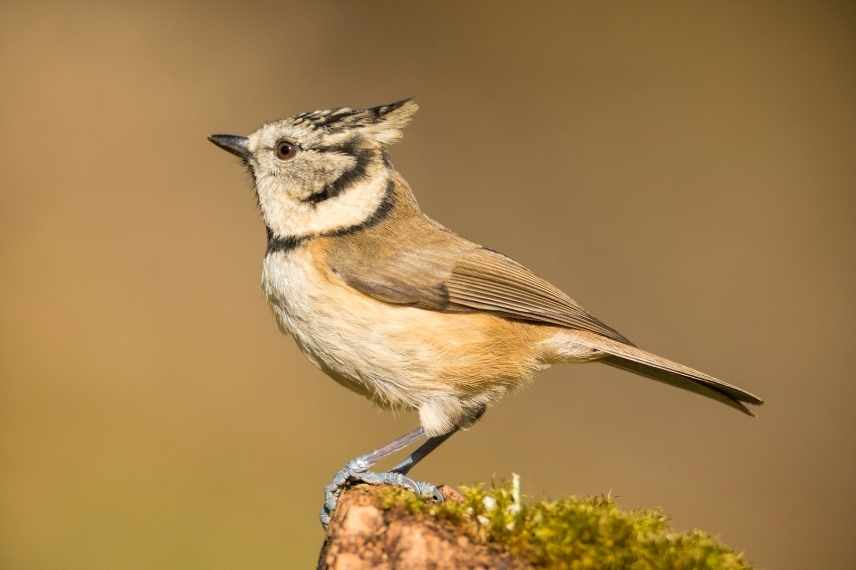
Crested Tit
Long-tailed Tit
Its former name, Long-tailed Tit (or “Flying Lollipop” or “Pan Handle” according to some cheeky ornithologists), gave this charming bird a place in this selection. However, according to recent classifications, the Long-tailed Tit (Aegithalos caudatus) is not part of the Paridae family, but belongs to the Aegithalidae family.
It is a very small bird with a very long tail and small round wings. Its belly is white to slightly pink, and its head is white and grey, usually featuring a black stripe from the forehead to the nape, passing above the eye. The Long-tailed Tit lives in small groups of ten to thirty birds, flitting from tree to tree. Unlike other “true tits,” it does not come to the ground.
The Long-tailed Tit is insectivorous during the warm season and feeds on small seeds and buds in winter. It is not uncommon to see it at the feeder in winter.
Its nest is not made in a cavity; rather, it is an oval nest completely closed except for an opening on the side, nestled in the branches of a tree or in a bush. The outside is composed of moss, lichens, plant fibres, and pieces of bark (spider webs hold it all together), while the inside is lined with feathers and hair.
To attract it to your garden: it loves deciduous forests, hedges, and thickets… So, if you have trees, bushes, and a nice free or bocage hedge in your garden, that’s perfect! A feeder in winter, filled with sunflower or niger seeds, will help it get through the harsh season. Leaving moss and lichen everywhere and providing animal hair will give it a boost for nest building.
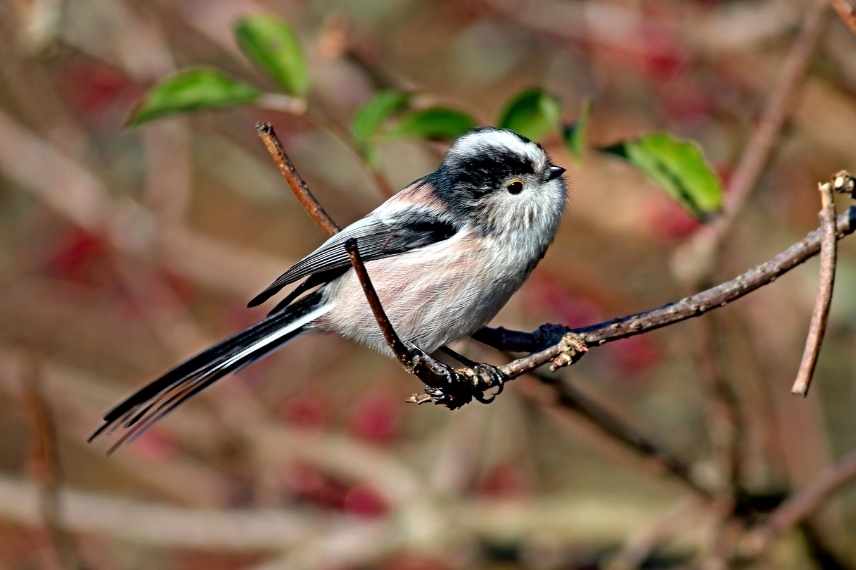
Long-tailed Tit
In summary: how to design your garden to attract tits?
- Tits are all more or less cavity-nesting, which means they nest in a cavity (hole in a tree, a wall…): so think about leaving holes in old sheds, a standing dead tree (if it poses no danger!) or install specific nest boxes;
- Tits are insectivorous: plant species that attract insects, caterpillars, larvae, spiders… and ban all forms of insecticidal (even so-called natural ones!);
- Tits stay with us in winter and consume seeds: let a few plants go to seed (burdock, Teasel…), plant berry bushes (Ligustrum, Cornus sanguinea, Cotoneaster, Rowan…) and place one or more feeders that you will fill with sunflower seeds (the best for birds in winter);
- Tits do not all have the same preferences regarding trees and bushes: plant as much diversity as possible, a clever mix of everything will allow you to welcome a good number of species;
- And of course: garden naturally!
- Subscribe!
- Contents
































Comments